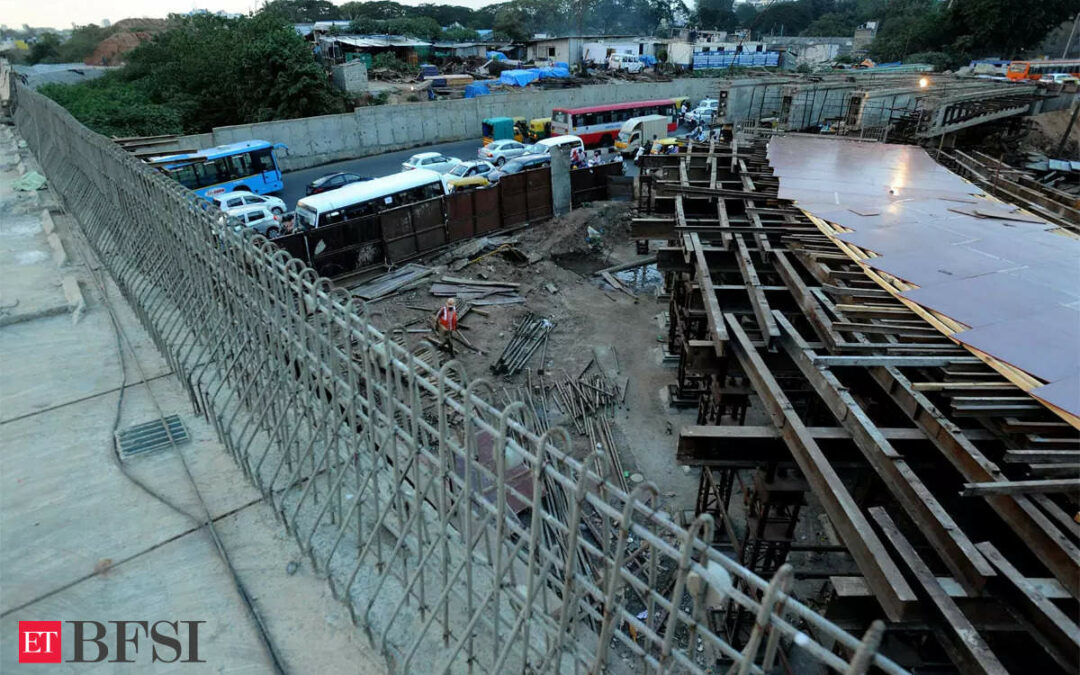New Delhi|Mumbai: The government is evaluating Reserve Bank of India draft rules calling for higher provisioning in infrastructure projects, while lenders are likely to oppose them on multiple forums. Officials cited concerns that they could lead to a rise in interest rates and derail capital expenditure momentum.
After the evaluation exercise, the draft rules will be discussed with the banking regulator during consultations, said people with knowledge of the matter.
The unveiling of the proposals led to a slide a day earlier, in the stocks of state-owned banks, non-banking finance companies (NBFCs) and infrastructure firms, over investor worries that the norms could take a toll on financials, if implemented.
“These are draft guidelines, and the consultation process is on. All stakeholders will try to find a common ground to manage risks while supporting infrastructure financing,” said a finance ministry official, adding that if banks and other ministries flag any concerns, these will be shared with RBI. The regulator has sought comments on its proposed guidelines by June 15.
Banks Set to Lobby Against Steep Increase
Banks are also set to lobby with the central bank against the sharp increase in provisions, arguing that it may stall the momentum that’s made India the fastest-growing major economy amid a climate of global uncertainty. The lenders will also likely make their views against the proposals known through the Indian Banks’ Association (IBA), senior bankers said. They will argue that applying higher provisions for ongoing projects could impact their viability, with costs going up, possibly leading to delays and stressed loans.
State-owned power sector NBFCs such as REC and Power Finance Corp will communicate their views directly to the regulator, said the officials cited above, adding that the Department of Financial Services will also flag any concerns that state-owned lenders highlight.
Also Read: Indian lenders to appeal RBI’s tough project finance proposal, sources say
The Fallout
“This is a very steep increase and comes when there are no real risks that one can see in project finance,” said a senior private sector bank executive. “No one has a clue on what led RBI to increase the provisions so sharply, because when you look at banking results, or even fresh slippages, they are lower than what is being recovered.”
“Banks will have to give feedback based on what they see,” the executive said. “But since RBI has started at 5%, it is very difficult to see what the logic is, or what could be a fair level, for provisions. It could force the handful of banks which do infrastructure lending to rethink lending to this sector.”
Under the proposed guidelines issued on May 3, lenders will be required to set aside up to 5% of outstanding exposure as provisions during the construction phase of projects, compared with the current 0.4%. This will be reduced to 2.5% when the project is operational. It will drop to 1% after the project generates adequate cash flow to repay obligations and long-term debt declines by at least 20% from the time of commencing commercial operations. The provisions are expected to be implemented in phases – 2% in FY25, 3.5% in FY26 and 5% by FY27.
Stocks of key infrastructure NBFCs such as Power Finance Corp, REC and Indian Renewable Energy Development Agency fell for the second day in a row on Tuesday. Public sector stocks had seen a decline of Rs 1.83 lakh crore in stakeholder value the previous day.
Bankers said the new norms are for all infrastructure projects, so costs will go across the board.
“The higher costs could make some of these projects unviable and increase stress in the banking system when none exists today. Banks and IBA will, of course, share feedback and suggestions on these new norms,” said a senior public sector bank executive.
Assessments Ongoing
An executive at IIFCL said the state-run infrastructure financing firm is studying the draft guidelines and will send inputs accordingly. “It’s too early to comment on the impact,” he said.
The road ministry is evaluating the implications, an official said. The initial observation was that it may result in a slight increase in interest rates for infrastructure projects and impact the cash flow for private players as well as the government, the person said. “Though risk weightage will go up, we don’t see any significant impact on the final cost,” he added.
PFC and REC may have a limited impact on profit and loss (P&L) accounts, but the stringent provisioning requirements may impact the capital adequacy ratio, an executive with one of the companies said.
According to a note by IIFL Securities, the proposed additional provisions in the draft guidelines will not be routed through P&L but instead apportioned to the impairment reserve (which cannot be included in the capital ratio and net non-performing assets calculations). “Therefore, NBFCs shall not have a return-on-equity impact, but infra-focused NBFCs, such as REC, PFC and IREDA can see a potential hit of 200-300 bps (basis points) to their capital ratio,” it said in its research note.
Some experts said the proposed guidelines will have no impact on the pace of infrastructure creation. “With this, RBI has only tried to reset areas of doubt. I don’t see any impact on interest rates or the pace of the construction,” said Vinayak Chatterjee, founder and managing trustee of the Infravision Foundation.
Additional Burden
However, Karthik Srinivasan, head of financial sector ratings at Icra, said that besides making projects more expensive, bank profitability may take a hit. “Banks will now be more mindful of increased exposure to project finance,” he said. “From RBI’s perspective, this move is in line with the recent tightening of regulations. The regulator is probably trying to ensure banks and NBFCs are insulated from any risk building up in project finance because it was this sector that a large part of NPAs came from in the last cycle.”
In a report on Tuesday, Macquarie analyst Suresh Ganapathy said the new provisions – along with additional disclosures that financial sector companies need to furnish on a quarterly basis – make the guidelines onerous in nature.
“It usually takes 6-7 years to achieve that outcome and hence, in the interim, banks will have to carry between 2.5-5% of the loan amount as provisioning charge, thereby significantly affecting the economics for the bank as well as for the project if banks decide to fully pass on the increased provisioning,” Ganapathy said.
CareEdge Ratings said in a report that the norms could lead to funding challenges. “A mandatory tail period accounting for 15% of a project’s economic life will restrict the ability of infrastructure projects to secure additional top-up loans,” it said. “This will necessitate an 8-10% increase in equity requirements for hybrid annuity model-based road projects to align the loan tenure with 85% of the economic life for concessions lasting 15 years.”
With additional inputs from Yogima Sharma











